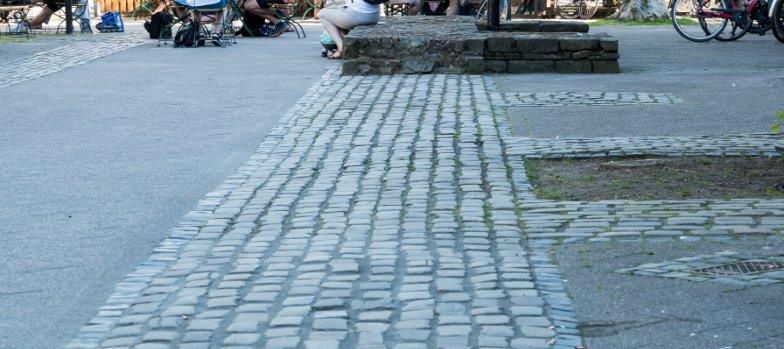Dormagen

You can still see the line of the camp’s ramparts in the cobblestones in front of Dormagen’s old town hall (Altes Rathaus).
A Roman cavalry camp occupied the site of present-day Dormagen from around 80 AD until approx. 161 AD. This is the first time that excavations along the Lower Germanic Limes have revealed traces of the pits that collected horse urine, confirming the existence of stables. After the original fort was destroyed in a fire, it was replaced by a smaller fortress. It was built in a corner of the old fort with the help of the existing ramparts and remained in use until around 430 AD. Traces of the structure of the ancient cavalry fort are still visible in the city today.
Access: public and private
Note:
The archaeological remains that make up the Lower Germanic Limes (NGL) UNESCO World Heritage Site are all very well preserved. Most of these structures are buried underground and well protected. Some are visible above ground. So far, there is very little on-site information explaining the history and significance of these finds. We are currently working on a comprehensive package of information and presentation resources to promote public understanding of these sites.
